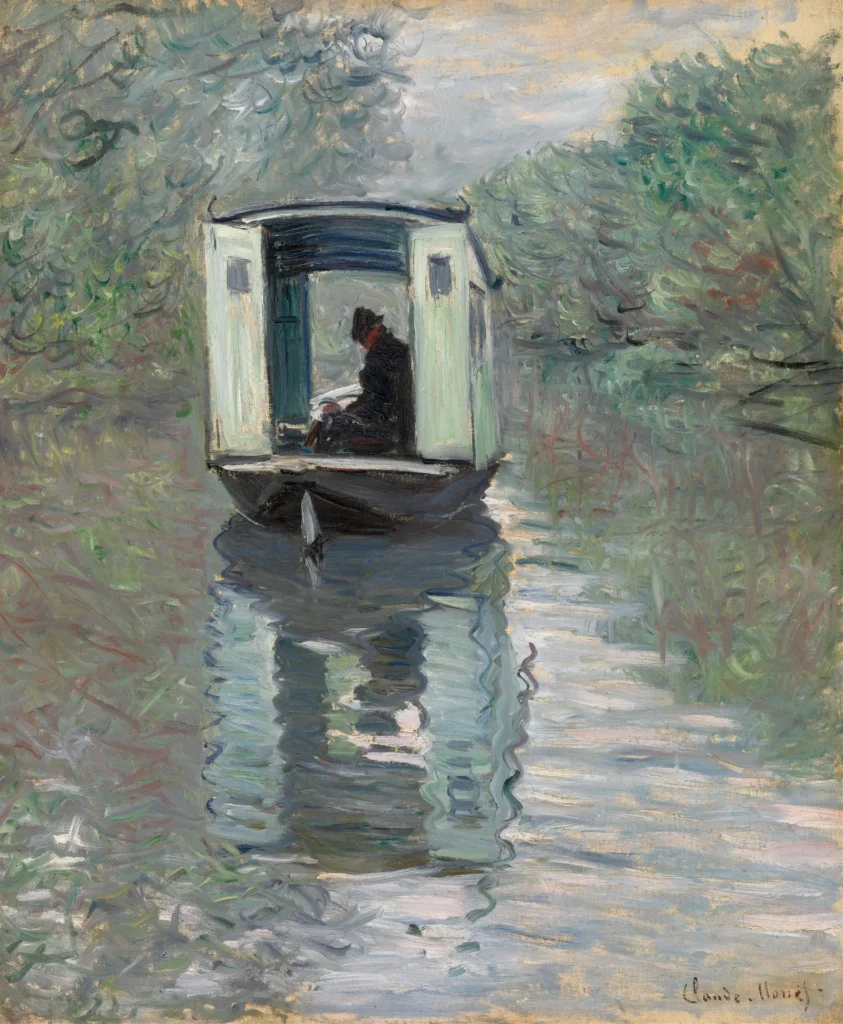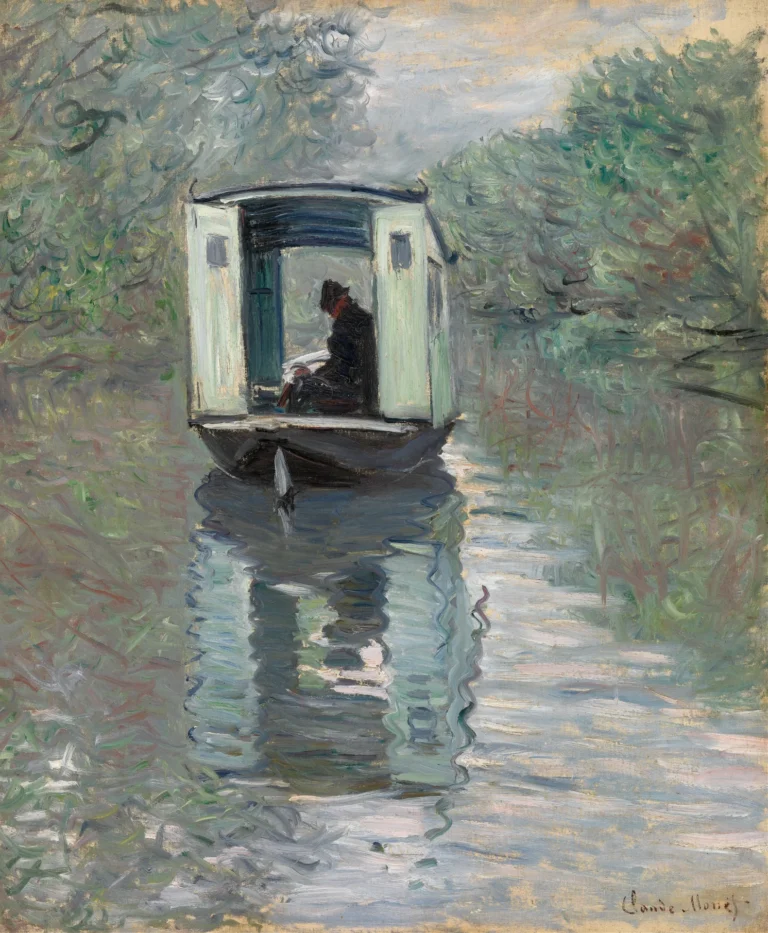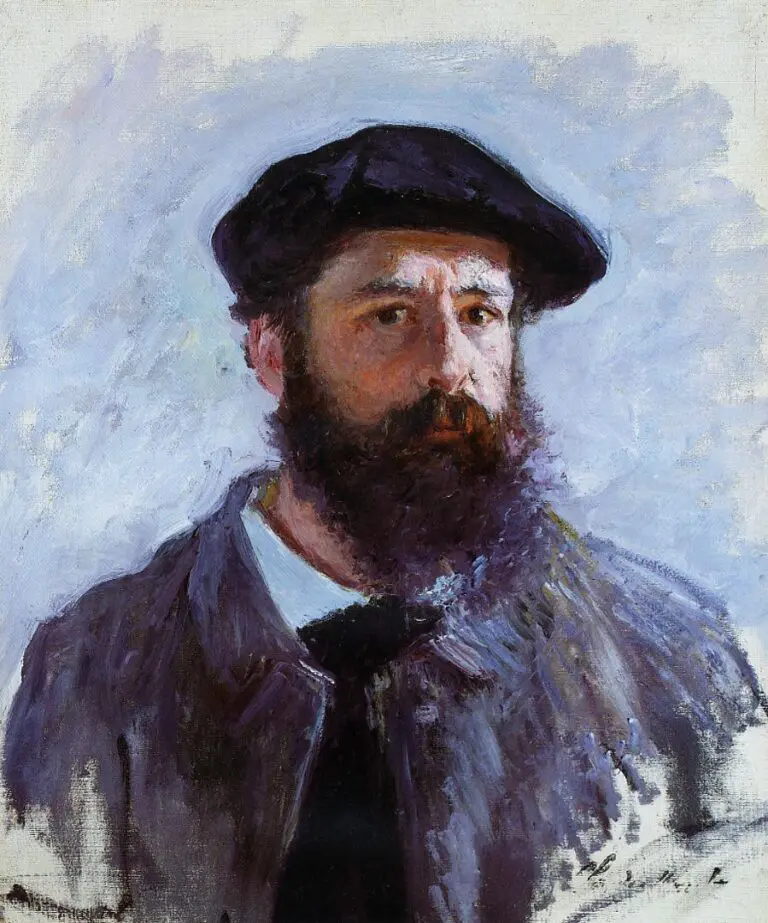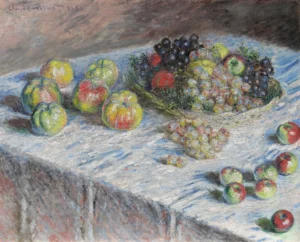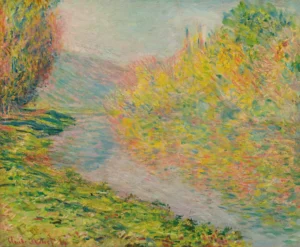The Studio Boat (1876)
Created in 1876, The Studio Boat is a quintessential Impressionist painting by Claude Monet, depicting the artist immersed in his creative process aboard his specially designed studio boat on the Seine River. This work exemplifies Monet's en plein air technique, capturing the transient effects of light and color in a scene that emphasizes both natural beauty and artistic solitude. It highlights a significant shift in Monet's artistic journey, mirroring a move towards a more focused exploration of nature compared to earlier urban themes, further solidifying its importance in the Impressionist movement.
Year 1876
About the Artwork
Monet's The Studio Boat captures a serene moment in 1876 as the artist paints from the comfort of his floating studio on the Seine River in Argenteuil. Acquired around 1873, his studio boat became a sanctuary where he could better access picturesque scenes that evaded traditional methods. The influence of fellow artist Charles François Daubigny is evident, both in the concept of the floating studio and in the overall composition. Monet's choice to cater to the tastes of the burgeoning middle class with smaller canvases speaks to his business acumen, while the introspective atmosphere of the painting reflects his deepening engagement with nature, making this artwork essential to understanding his evolution.
Did You Know
Monet’s studio boat was a custom-built vessel that allowed him to paint directly from the River Seine, emphasizing both practicality and artistic freedom in his work.
The design of Monet’s studio boat was likely inspired by that of fellow artist Charles François Daubigny, who was a significant influence on Monet’s approach to painting and the use of boats for art.
With The Studio Boat, Monet strategically catered to the growing middle class by producing smaller canvases that were more accessible and marketable compared to his earlier, larger compositions.




